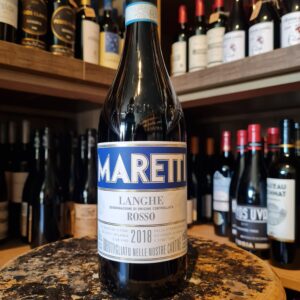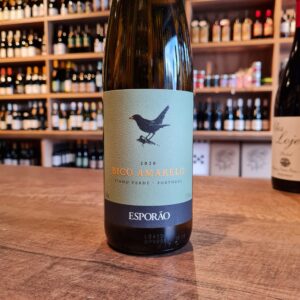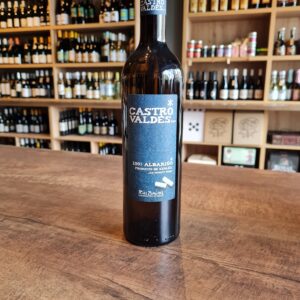-
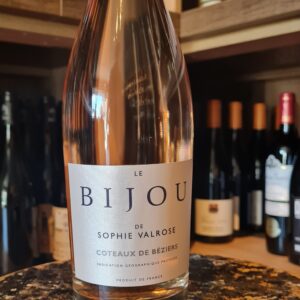 Le Bijou de Sophie Valrose is named after a lady who worked in the Languedoc vineyards during the late 19th century and became something of a local hero. At the time, it was largely women who worked in the vineyards; pruning and harvesting the vines. Sadly these women were often mistreated, overworked and underpaid. Sophie fought for women’s rights and drastically improved the conditions for her fellow female workers in the vineyard in which she worked. Bijou is a tribute to her memory and we share her story on the back of every bottle sold. The grapes are sourced from low-yielding old vines on the sloping hillsides of various vineyards in the Languedoc-Roussillon region of southern France. The areas are made up of old volcanic soils composed of 70% schist, which helps create high-quality grapes with great structure and freshness.Bijou’s flagship wine, a beautiful pale salmon coloured rosé. Elegantly fragrant, with aromas of wild strawberries, citrus and delicate floral notes. Round and creamy on the palate, with ripe red berry flavours and a soft minerality. Elegant and balanced with refreshing acidity and a silky smooth finish. The perfect accompaniment to canapés, white meats, fish and salads.
Le Bijou de Sophie Valrose is named after a lady who worked in the Languedoc vineyards during the late 19th century and became something of a local hero. At the time, it was largely women who worked in the vineyards; pruning and harvesting the vines. Sadly these women were often mistreated, overworked and underpaid. Sophie fought for women’s rights and drastically improved the conditions for her fellow female workers in the vineyard in which she worked. Bijou is a tribute to her memory and we share her story on the back of every bottle sold. The grapes are sourced from low-yielding old vines on the sloping hillsides of various vineyards in the Languedoc-Roussillon region of southern France. The areas are made up of old volcanic soils composed of 70% schist, which helps create high-quality grapes with great structure and freshness.Bijou’s flagship wine, a beautiful pale salmon coloured rosé. Elegantly fragrant, with aromas of wild strawberries, citrus and delicate floral notes. Round and creamy on the palate, with ripe red berry flavours and a soft minerality. Elegant and balanced with refreshing acidity and a silky smooth finish. The perfect accompaniment to canapés, white meats, fish and salads. -
 The Le Rime appears pale yellow with green highlights, with intense aromas of green fruit followed by zippy citrus on the nose. The palate is fresh and lively with ripe pear and juicy green apple in abundance, finishing clean and full with persistent fruit and citrus cream, particularly fetching but do not overchill and allow to open in the glass. Best consumed young and would be ideal with fresh fish and summer salads.
The Le Rime appears pale yellow with green highlights, with intense aromas of green fruit followed by zippy citrus on the nose. The palate is fresh and lively with ripe pear and juicy green apple in abundance, finishing clean and full with persistent fruit and citrus cream, particularly fetching but do not overchill and allow to open in the glass. Best consumed young and would be ideal with fresh fish and summer salads. -
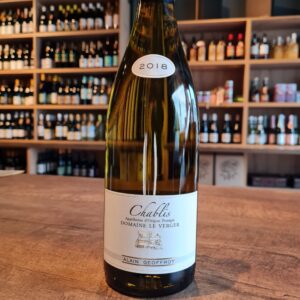 Domaine Le Verger Chablis is light gold, pronounced white flowers, mingled with an array of tropical and sweet stone fruit on the nose. The palate opens full and round, with pineapple, apricot and hints of grapefruit, hints of vegetal and lively minerality finishing fresh with great structure and dry. An excellent Chardonnay that should not be over-chilled, please allow to-open and would be best served with oysters, shellfish in general, grilled fish and even chicken. A classic Chablis at an affordable price!
Domaine Le Verger Chablis is light gold, pronounced white flowers, mingled with an array of tropical and sweet stone fruit on the nose. The palate opens full and round, with pineapple, apricot and hints of grapefruit, hints of vegetal and lively minerality finishing fresh with great structure and dry. An excellent Chardonnay that should not be over-chilled, please allow to-open and would be best served with oysters, shellfish in general, grilled fish and even chicken. A classic Chablis at an affordable price! -
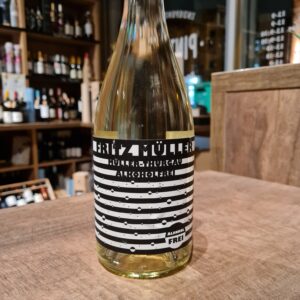 Non-alcoholic wine born in 2009 from a bubbly guy with old roots and modern tastes. Invariably well-dressed, he captures the world’s attention with his ranges of Non-Alcoholic wines in Frizzante style. Guido Walter and Jürgen Hofmann put their heads together. The German answer to frizzante had to be fresh and fruity, uncomplicated and affordable. A semi-sparkling wine that begins a carefree evening and lets you continue dancing late into the night. What began as an experimental small edition soon spread its wings and took flight. Suddenly it could be found at every party and could be seen winning design awards and notes of good taste. Everyone wants Fritz Müller. Refreshing, fizzy and frivolous: completely uncomplicated, the non-alcoholic Fritz Müller offers light-footed fun and fruity enjoyment. Vinified from the same grapes as the Fritz Müller semi-sparkling wine, this version entices sipping one or two glasses more without regret the next day. Wonderfully pure, it is best enjoyed chilled to 8°C, or as an ingredient in virgin cocktails. Guilt-free wine ;)
Non-alcoholic wine born in 2009 from a bubbly guy with old roots and modern tastes. Invariably well-dressed, he captures the world’s attention with his ranges of Non-Alcoholic wines in Frizzante style. Guido Walter and Jürgen Hofmann put their heads together. The German answer to frizzante had to be fresh and fruity, uncomplicated and affordable. A semi-sparkling wine that begins a carefree evening and lets you continue dancing late into the night. What began as an experimental small edition soon spread its wings and took flight. Suddenly it could be found at every party and could be seen winning design awards and notes of good taste. Everyone wants Fritz Müller. Refreshing, fizzy and frivolous: completely uncomplicated, the non-alcoholic Fritz Müller offers light-footed fun and fruity enjoyment. Vinified from the same grapes as the Fritz Müller semi-sparkling wine, this version entices sipping one or two glasses more without regret the next day. Wonderfully pure, it is best enjoyed chilled to 8°C, or as an ingredient in virgin cocktails. Guilt-free wine ;) -
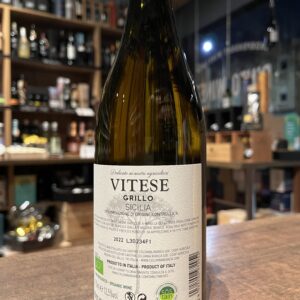
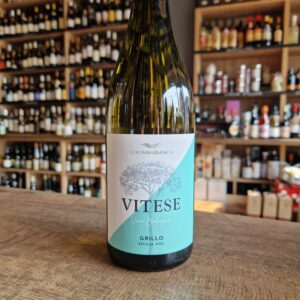 The Colomba Bianca winery was founded in 1970. During the last 10 years, under the guidance of our Chairman Leonardo Taschetta, it has become the biggest wine growing co-operative in Sicily. The company today, can, in fact, count on circa 2480 partners and extends along 7500 hectars of vineyards between the provinces of Trapani, Palermo, Agrigento, Caltanissetta e Ragusa, with 5 wineries distributed in the whole territory. The vineyards can be found in areas which benefit of a vast pedoclimatic diversity, from the low coastal areas up to an altitude of 600 metres above sea level. "We work with the aim that our farmers receive the right compensation for their work. This adds dignity to Sicilian agriculture and to the wines which express at best our territory. It is for this reason that each one of our wines is dedicated to our farmers." - Colomba Bianco Grillo is the flagship of Sicily's indigenous white varieties. Famous for its role in the production of Marsala wines, but has recently come into its own as a varietal making light, fresh and citrussy wines. Ideal with fish first courses, delicate risottos and white meat dishes.
The Colomba Bianca winery was founded in 1970. During the last 10 years, under the guidance of our Chairman Leonardo Taschetta, it has become the biggest wine growing co-operative in Sicily. The company today, can, in fact, count on circa 2480 partners and extends along 7500 hectars of vineyards between the provinces of Trapani, Palermo, Agrigento, Caltanissetta e Ragusa, with 5 wineries distributed in the whole territory. The vineyards can be found in areas which benefit of a vast pedoclimatic diversity, from the low coastal areas up to an altitude of 600 metres above sea level. "We work with the aim that our farmers receive the right compensation for their work. This adds dignity to Sicilian agriculture and to the wines which express at best our territory. It is for this reason that each one of our wines is dedicated to our farmers." - Colomba Bianco Grillo is the flagship of Sicily's indigenous white varieties. Famous for its role in the production of Marsala wines, but has recently come into its own as a varietal making light, fresh and citrussy wines. Ideal with fish first courses, delicate risottos and white meat dishes. -
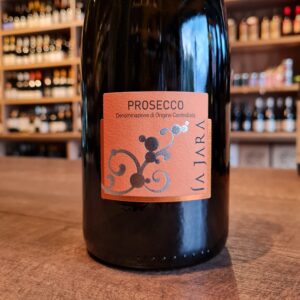 La Jara, based in the heart of Prosecco country just south of Conegliano, make a superb range of organic wines including some excellent Proseccos such as this. Being a frizzante it's got a soft sparkle and in some ways helps the fruit character stand out that bit more. With masses of fine bubbles and flavours of apple, peach, pear and ripe citrus fruits it's a very approachable style that's perhaps a bit too easy to drink. Certainly a step above a lot of other Proseccos. It's freshness makes it a great 'anytime' fizz. It's also really good alongside nibbles like olives, or tortilla chips and dips.
La Jara, based in the heart of Prosecco country just south of Conegliano, make a superb range of organic wines including some excellent Proseccos such as this. Being a frizzante it's got a soft sparkle and in some ways helps the fruit character stand out that bit more. With masses of fine bubbles and flavours of apple, peach, pear and ripe citrus fruits it's a very approachable style that's perhaps a bit too easy to drink. Certainly a step above a lot of other Proseccos. It's freshness makes it a great 'anytime' fizz. It's also really good alongside nibbles like olives, or tortilla chips and dips. -
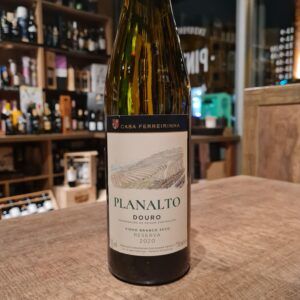 Planalto is one of the biggest references of white wine in the Douro Demarcated Region, fruit of the in-depth studies carried out over the years, the careful choice of the grape varieties that compose it and the use of the best winemaking technology in its production. This white blend comes from high-altitude vineyards above the river Douro. The soil in the Douro Valley is schistous; a slate-like metamorphic rock that fractures vertically - allowing vine roots to dig deep to access water and nutrients to sustain them through the hot Douro summers. The poor quality of the soil forces the grapes to produce low yields of grapes with a great concentration of flavour. The grapes were harvested by hand and were selected for their balance between flavour intensity and freshness. Ideal to accompany fish, seafood and white meat dishes.
Planalto is one of the biggest references of white wine in the Douro Demarcated Region, fruit of the in-depth studies carried out over the years, the careful choice of the grape varieties that compose it and the use of the best winemaking technology in its production. This white blend comes from high-altitude vineyards above the river Douro. The soil in the Douro Valley is schistous; a slate-like metamorphic rock that fractures vertically - allowing vine roots to dig deep to access water and nutrients to sustain them through the hot Douro summers. The poor quality of the soil forces the grapes to produce low yields of grapes with a great concentration of flavour. The grapes were harvested by hand and were selected for their balance between flavour intensity and freshness. Ideal to accompany fish, seafood and white meat dishes. -
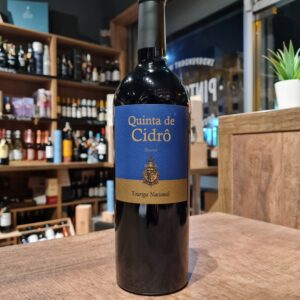 I have been chasing a 100% Touriga Nacional for a while now, with some disappointments in the middle. Mostly due to knowing the full potential of Touriga Nacional and what can be done with it. Was loosing faith(Poor supplier offering in Ireland) and was actively looking to import myself a few options until I stumbled upon this gem. This wine is the example where no one should judge a book by its cover. Across all Companhia Velha Wines the labels are just minimal, classy but not in the way you would think. Has a bit of I don't give a damn about them and that subtlety actually impresses me even further. No distractions to be added here!!! Bear in mind this winery was one of the first if not the first Wine family business(1756) in the Douro Valley(1763) and it was full integrated when it became the first official wine region in the world. Quinta de Cidrô is located at São João da Pesqueira, which is one of the most highly regarded areas of Douro Valley. Throughout the last 20 years, Cidrô has been transformed into an experimental-model vineyard for the entire region. In virgin soils, cutting edge techniques were employed to plant 150 ha of the best varieties, creating one of the largest surfaces of single vineyard in the entire Douro Region. In the most privileged location, international varieties perform equally well as the local grapes. Chardonnay, Sauvignon Blanc, Viognier, Pinot Noir, and the adaptable Cabernet Sauvignon are some of the foreign varieties that here express their best qualities when vinified by the extensive winemaking know-how present at the Company. Touriga Nacional is Portugal’s star variety and the dominant red grape at Quinta de Cidrô. The altitude of this Quinta provides excellent freshness and levels of acidity, ideal conditions for an elegant red wine. Touriga Nacional is a versatile grape, with its main characteristics being the small bundle, its low yield and jagged leaf. Its presence in the vines is intimidating, as it requires a constant care for its wild and rebellious character of growing disorderly. At Quinta de Cidrô, Touriga Nacional was adapted to a less habitual place, as it was mostly planted in low altitude vineyards and subject to high temperatures; the opposite of Quinta de Cidrô. Personally I love it on its own with at least 45 minutes decanting or enjoy really slow the very first drop. Winemakers suggestion for this stunning wine are: Rump Steak, Pork Leg, Parmigiano Cheese and Dark Chocolate.
I have been chasing a 100% Touriga Nacional for a while now, with some disappointments in the middle. Mostly due to knowing the full potential of Touriga Nacional and what can be done with it. Was loosing faith(Poor supplier offering in Ireland) and was actively looking to import myself a few options until I stumbled upon this gem. This wine is the example where no one should judge a book by its cover. Across all Companhia Velha Wines the labels are just minimal, classy but not in the way you would think. Has a bit of I don't give a damn about them and that subtlety actually impresses me even further. No distractions to be added here!!! Bear in mind this winery was one of the first if not the first Wine family business(1756) in the Douro Valley(1763) and it was full integrated when it became the first official wine region in the world. Quinta de Cidrô is located at São João da Pesqueira, which is one of the most highly regarded areas of Douro Valley. Throughout the last 20 years, Cidrô has been transformed into an experimental-model vineyard for the entire region. In virgin soils, cutting edge techniques were employed to plant 150 ha of the best varieties, creating one of the largest surfaces of single vineyard in the entire Douro Region. In the most privileged location, international varieties perform equally well as the local grapes. Chardonnay, Sauvignon Blanc, Viognier, Pinot Noir, and the adaptable Cabernet Sauvignon are some of the foreign varieties that here express their best qualities when vinified by the extensive winemaking know-how present at the Company. Touriga Nacional is Portugal’s star variety and the dominant red grape at Quinta de Cidrô. The altitude of this Quinta provides excellent freshness and levels of acidity, ideal conditions for an elegant red wine. Touriga Nacional is a versatile grape, with its main characteristics being the small bundle, its low yield and jagged leaf. Its presence in the vines is intimidating, as it requires a constant care for its wild and rebellious character of growing disorderly. At Quinta de Cidrô, Touriga Nacional was adapted to a less habitual place, as it was mostly planted in low altitude vineyards and subject to high temperatures; the opposite of Quinta de Cidrô. Personally I love it on its own with at least 45 minutes decanting or enjoy really slow the very first drop. Winemakers suggestion for this stunning wine are: Rump Steak, Pork Leg, Parmigiano Cheese and Dark Chocolate. -
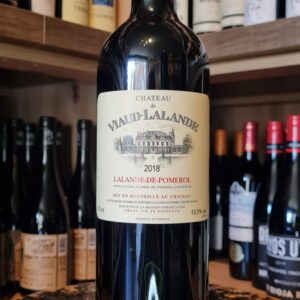 Chateau Viaud Lalande is a small-scale venture of the Durand – Teyssier family who have been making wine in the village of Puisseguin, appellation of Lalande de Pomerol, for three generations. 1.5 hectares of vineyards adjoining the Chateau were planted by Philippe Durand – Teyssier back in the 60’s. Typically for the region, those are mostly Merlot and Cabernet Franc well suited to the local, clay dominated soils. Since 2007 Philippe has handed over the wine making and day-to-day running of the property to his son Thomas. Having previously worked in prominent 1er and Grand Cru Classé estates in Saint Emilion (Château Belair, Château Cadet Bon), Thomas is continuing family tradition, with clear focus on quality. Annual production: 9000 bottles.
Chateau Viaud Lalande is a small-scale venture of the Durand – Teyssier family who have been making wine in the village of Puisseguin, appellation of Lalande de Pomerol, for three generations. 1.5 hectares of vineyards adjoining the Chateau were planted by Philippe Durand – Teyssier back in the 60’s. Typically for the region, those are mostly Merlot and Cabernet Franc well suited to the local, clay dominated soils. Since 2007 Philippe has handed over the wine making and day-to-day running of the property to his son Thomas. Having previously worked in prominent 1er and Grand Cru Classé estates in Saint Emilion (Château Belair, Château Cadet Bon), Thomas is continuing family tradition, with clear focus on quality. Annual production: 9000 bottles. -
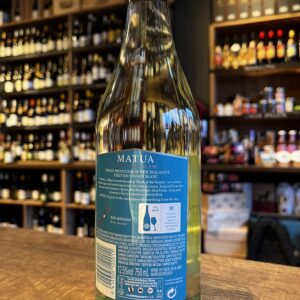
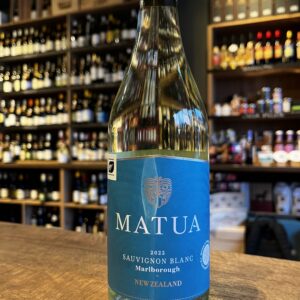 This wine represents the legend of Kupe tangling with a giant octopus who kept stealing all his fish off the hook. During the ensuing fight the beast's tentacles gouged out the Marlborough Sounds and Kupe cut out its eyes which he placed on two rocks known today as Nga Whatu ' The Eyes'. It’s hard to separate New Zealand and Sauvignon Blanc these days, but Matua were the first to put them together, over 40 years ago. You could say They've changed the way the world enjoys white wine. As the Head of the Family (the Maori translation of Matua) They have a tradition of telling stories as a way of passing on knowledge to the next generation. Their most famous winegrowing regions set the scene for some great legendary historical folklore. Wines match dishes from cooked salmon, lettuce, chicken and mushrooms.
This wine represents the legend of Kupe tangling with a giant octopus who kept stealing all his fish off the hook. During the ensuing fight the beast's tentacles gouged out the Marlborough Sounds and Kupe cut out its eyes which he placed on two rocks known today as Nga Whatu ' The Eyes'. It’s hard to separate New Zealand and Sauvignon Blanc these days, but Matua were the first to put them together, over 40 years ago. You could say They've changed the way the world enjoys white wine. As the Head of the Family (the Maori translation of Matua) They have a tradition of telling stories as a way of passing on knowledge to the next generation. Their most famous winegrowing regions set the scene for some great legendary historical folklore. Wines match dishes from cooked salmon, lettuce, chicken and mushrooms. -
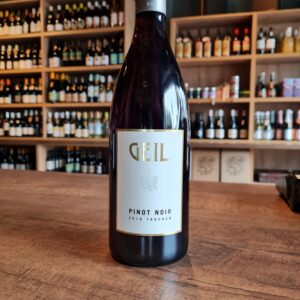 Weingut J. Geil is a winery making approachable, quaffable wines, all along the lines of greatly respecting the nature. This reflects in quality of their fruit and subsequently in their wines. Awarded many trophies each year, Weingut Geil belongs among some of the top German producers. There is nothing to be take lightly about their Pinot Noir, a serious, serious wine. Beautifully earthy and soft, with plenty of ripe wild berries. Excellent balance and considerable length. Accessible and juicy, yet wholeheartedly deep genuinely expressing the terroir of Bechtheim
Weingut J. Geil is a winery making approachable, quaffable wines, all along the lines of greatly respecting the nature. This reflects in quality of their fruit and subsequently in their wines. Awarded many trophies each year, Weingut Geil belongs among some of the top German producers. There is nothing to be take lightly about their Pinot Noir, a serious, serious wine. Beautifully earthy and soft, with plenty of ripe wild berries. Excellent balance and considerable length. Accessible and juicy, yet wholeheartedly deep genuinely expressing the terroir of Bechtheim -
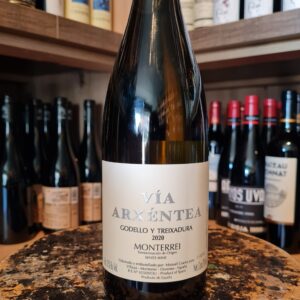 DO Monterrei is the smallest of the Galician DOs and the most recent, having been created in 1996. It is an emerging region located in the province of Ourense in the south-east of Galicia, on the border with Portugal. The Atlantic influence here is not as strong and the climate is hotter and more continental than the rest of Galicia, making it possible to produce impressive whites from Treixadura and Godello as well as reds from autochtonous Mencia. Most of the vineyards are located on the slopes lining the River Támega where the soil has a deep red colour with a high clay content. After spending many years working for other wineries in the area around Galicia, Manuel Guerra Justo decided to break away and set up his own adega, “Via Arxentea”, literally translated as “ The Silver Route”, the local name for the important pilgrimage route of El Camino de Santiago to Santiago de Compostela. Manuel Guerra is a “Colleitero” and therefore responsible for the entire production cycle, from the care in the vineyard to the winemaking. He is the first to acknowledge that the secret to achieving purity and varietal expression in his wines is in his vineyard management which he attends to personally and pampers vine by vine as if they were his own children, with the sole objective of achieving maximum quality. Under the consultancy of well known winemaker, Alvaro Bueno, Manuel Guerra Justo owns four hectares around Verin, planted almost equally between Godello and Treixadura and a small batch of Mencia. Vía Arxentea wine are made from estate bottled fruit, harvested by hand and fermented using indigenous yeasts.
DO Monterrei is the smallest of the Galician DOs and the most recent, having been created in 1996. It is an emerging region located in the province of Ourense in the south-east of Galicia, on the border with Portugal. The Atlantic influence here is not as strong and the climate is hotter and more continental than the rest of Galicia, making it possible to produce impressive whites from Treixadura and Godello as well as reds from autochtonous Mencia. Most of the vineyards are located on the slopes lining the River Támega where the soil has a deep red colour with a high clay content. After spending many years working for other wineries in the area around Galicia, Manuel Guerra Justo decided to break away and set up his own adega, “Via Arxentea”, literally translated as “ The Silver Route”, the local name for the important pilgrimage route of El Camino de Santiago to Santiago de Compostela. Manuel Guerra is a “Colleitero” and therefore responsible for the entire production cycle, from the care in the vineyard to the winemaking. He is the first to acknowledge that the secret to achieving purity and varietal expression in his wines is in his vineyard management which he attends to personally and pampers vine by vine as if they were his own children, with the sole objective of achieving maximum quality. Under the consultancy of well known winemaker, Alvaro Bueno, Manuel Guerra Justo owns four hectares around Verin, planted almost equally between Godello and Treixadura and a small batch of Mencia. Vía Arxentea wine are made from estate bottled fruit, harvested by hand and fermented using indigenous yeasts. -
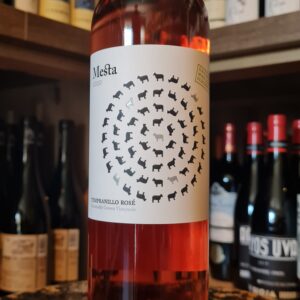 Mesta is a range of organically and sustainably grown single varietal wines, which stylishly showcase the Spanish wine revolution under the symbol of the Mesta. Mesta was a powerful alliance of sheep ranchers in medieval Castile, who controlled the cañadas: the traditional rights of way for migrating sheep. To this day the cañadas are protected from being blocked or built upon, a reminder of ancient rights and a model of coexistence with nature. This modern range, from the fashionable DO Uclés in central Castile, offers wines of great purity and varietal typicity.A versatile wine which accompanies spicy dishes perfectly, Asian curries, seafood risotto or a light salad with grilled prawns. Rosé wines are in fashion not just in the summer but also throughout the year, and this beautiful Mesta Rosé is a serious contender in the Rosé world. Especially at this price!!!
Mesta is a range of organically and sustainably grown single varietal wines, which stylishly showcase the Spanish wine revolution under the symbol of the Mesta. Mesta was a powerful alliance of sheep ranchers in medieval Castile, who controlled the cañadas: the traditional rights of way for migrating sheep. To this day the cañadas are protected from being blocked or built upon, a reminder of ancient rights and a model of coexistence with nature. This modern range, from the fashionable DO Uclés in central Castile, offers wines of great purity and varietal typicity.A versatile wine which accompanies spicy dishes perfectly, Asian curries, seafood risotto or a light salad with grilled prawns. Rosé wines are in fashion not just in the summer but also throughout the year, and this beautiful Mesta Rosé is a serious contender in the Rosé world. Especially at this price!!! -
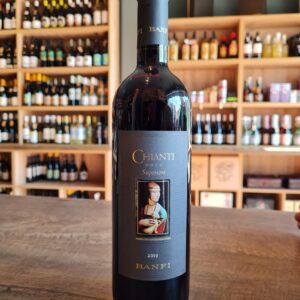 The Banfi Chianti Superiore begins with a very nice aroma of black cherry, plum, a little spice, a little earth and some nice floral notes. Tasting the wine reveals plum, oak,licorice a bit of spice, a nice dense and velvety texture plus dusty tannins = One Terrific Tuscan! Add in good acidity and balance on this medium-bodied wine and you quickly realize this wine is delivering great value for its price. The finish is very nice with good length and features some excellent slightly sour black cherry notes. Try with BBQ-marinated pork ribs, beef and vegetable skewers or T bone steaks. I am a big fan of Tuscan wines specially Banfi, would confidently recommend it.
The Banfi Chianti Superiore begins with a very nice aroma of black cherry, plum, a little spice, a little earth and some nice floral notes. Tasting the wine reveals plum, oak,licorice a bit of spice, a nice dense and velvety texture plus dusty tannins = One Terrific Tuscan! Add in good acidity and balance on this medium-bodied wine and you quickly realize this wine is delivering great value for its price. The finish is very nice with good length and features some excellent slightly sour black cherry notes. Try with BBQ-marinated pork ribs, beef and vegetable skewers or T bone steaks. I am a big fan of Tuscan wines specially Banfi, would confidently recommend it. -
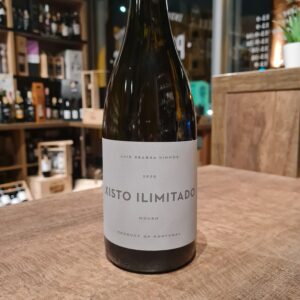 Another under the radar Portuguese White. This drop is now considered one of the new best contemporanean whites in Portugal. Produced by Luis Seabra, who worked for more than 10 years as an oenologist for Dirk Niepoort and finally started to follow his own path in 2012. The name he gives to his wines is indicative of his vision of wine: Xisto (Schist). He makes very pure wines that reflect their terroir. Luis Seabra sets a new standard in the Douro with his pure wines. Xisto Ilimitado, is a Portuguese analogue of the idea of a "village-level" Burgundy. A blend of six varieties planted in three sub-areas of the Douro, Ilimitado is a glimpse of the appellation's schist soil. Luis Seabra, has concentrated his production on the different soil types of the valley. Bright, concentrated and fresh, Xisto Ilimitado is an excellent introduction to the new Douro. Vineyards located in Cima Corgo. The vines are between 30 and 45 years old, planted in micaceous schist at an altitude of 500 to 600 m, and are a sub-region that experiences extreme highs and lows in terms of temperature, with one of the largest day-night temperature deltas in Portugal. As such, the fruit experiences an extended resting period. Annual rainfall of 400 mm typical of the region. Goes wonderfully with roasted poultry, white fish and seafood, and especially with the spiciest preparations
Another under the radar Portuguese White. This drop is now considered one of the new best contemporanean whites in Portugal. Produced by Luis Seabra, who worked for more than 10 years as an oenologist for Dirk Niepoort and finally started to follow his own path in 2012. The name he gives to his wines is indicative of his vision of wine: Xisto (Schist). He makes very pure wines that reflect their terroir. Luis Seabra sets a new standard in the Douro with his pure wines. Xisto Ilimitado, is a Portuguese analogue of the idea of a "village-level" Burgundy. A blend of six varieties planted in three sub-areas of the Douro, Ilimitado is a glimpse of the appellation's schist soil. Luis Seabra, has concentrated his production on the different soil types of the valley. Bright, concentrated and fresh, Xisto Ilimitado is an excellent introduction to the new Douro. Vineyards located in Cima Corgo. The vines are between 30 and 45 years old, planted in micaceous schist at an altitude of 500 to 600 m, and are a sub-region that experiences extreme highs and lows in terms of temperature, with one of the largest day-night temperature deltas in Portugal. As such, the fruit experiences an extended resting period. Annual rainfall of 400 mm typical of the region. Goes wonderfully with roasted poultry, white fish and seafood, and especially with the spiciest preparations -
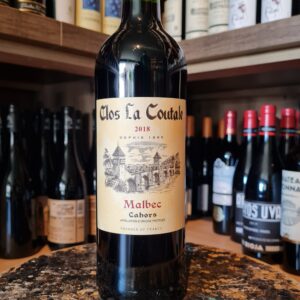 Malbec is the main grape in the legendary ‘Black wine of Cahors’. Way before Argentina made the varietal ‘famous’, Malbec – though in this region it is known as Côt or Auxerrois. – was making long-lived wines from Cahors – the 1959 Clos La Coutale is still drinking superbly. Clos La Coutale is a benchmark of the Cahors region and has a history of producing some of the finest and longest-lived wines of the region. Blackcurrants, blackberry's and prune notes followed by a soft and elegant palate that has an enticing note of vanilla. This Clos La Coutale wine is matured in barrels and wooden casks for one year in order to obtain a good balance between tannins and fruit. Organic and true gem at this price point.
Malbec is the main grape in the legendary ‘Black wine of Cahors’. Way before Argentina made the varietal ‘famous’, Malbec – though in this region it is known as Côt or Auxerrois. – was making long-lived wines from Cahors – the 1959 Clos La Coutale is still drinking superbly. Clos La Coutale is a benchmark of the Cahors region and has a history of producing some of the finest and longest-lived wines of the region. Blackcurrants, blackberry's and prune notes followed by a soft and elegant palate that has an enticing note of vanilla. This Clos La Coutale wine is matured in barrels and wooden casks for one year in order to obtain a good balance between tannins and fruit. Organic and true gem at this price point. -
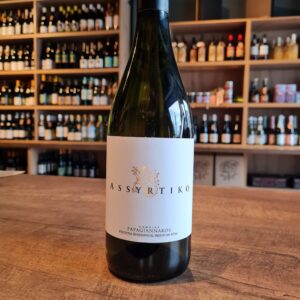 Founded in 1919, Domaine Papagiannakos is located in the Attica region of Central Greece, just 18 miles from Athens. Today, the winery is run by the 3rd generation, Vassilis Papagiannakos, who has issued a new era of modern winemaking while still maintaining the family’s dedication to cultivating and preserving the region’s most famous indigenous grape, Savatiano. In addition the Domaine has plant Malagousia and Assyrtiko. The Assyrtiko vineyards are located in northeastern Attica at an altitude of 330 feet. The vineyard has a northeastern facing exposure. The vineyard is farmed without irrigation, resulting in low-yielding vines that produce grapes with rich, concentrated fruit flavors. The limestone soil and the unique microclimate of the region produces wine with a very clean and crisp profile with citrus and white flesh aromas.The acidity is very well integrated into the wine and gives the ability for long aging. With aging the wine develops a beautiful mineral character. The refreshing character of the wine makes it an ideal accompaniment for seafood, fish, white meat, and Mediterranean cuisine.
Founded in 1919, Domaine Papagiannakos is located in the Attica region of Central Greece, just 18 miles from Athens. Today, the winery is run by the 3rd generation, Vassilis Papagiannakos, who has issued a new era of modern winemaking while still maintaining the family’s dedication to cultivating and preserving the region’s most famous indigenous grape, Savatiano. In addition the Domaine has plant Malagousia and Assyrtiko. The Assyrtiko vineyards are located in northeastern Attica at an altitude of 330 feet. The vineyard has a northeastern facing exposure. The vineyard is farmed without irrigation, resulting in low-yielding vines that produce grapes with rich, concentrated fruit flavors. The limestone soil and the unique microclimate of the region produces wine with a very clean and crisp profile with citrus and white flesh aromas.The acidity is very well integrated into the wine and gives the ability for long aging. With aging the wine develops a beautiful mineral character. The refreshing character of the wine makes it an ideal accompaniment for seafood, fish, white meat, and Mediterranean cuisine. -
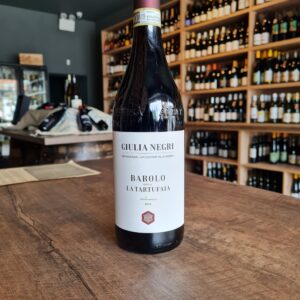 Giulia Negri is a young talent that goes by the nickname "Barolo girl" in the wine world. The grapes for this archetype of a modern-traditional Barolo come from the top vineyards Brunate and Serradenari, the latter is located at an altitude of up to 520 m, and the soils are clayey-sandy. It is an area with a particularly cool and breezy microclimate, which is reflected in the elegant profile of the wines. Climbing towards the top of the hill, the soils become increasingly rich in sandy veins and limestone marl, which contribute to giving Barolo an extreme expressive refinement. The high quality grapes, a work in the cellar that is very respectful of the raw material and aimed at enhancing the typical characteristics of the terroir, allow the creation of a Barolo faithful to the land of origin. Dressed to impress, savory red with a fine fragrance on the palate that doesn't deny its origin and the grape variety, it is of an almost unique elegance and freshness that allows it to be identified as a lively and completely complete top wine even when young. Further years of maturity are certainly not a mistake, because one feels impressively how the complexity increasing with the age joins the finesse and elegance already unmistakable today. One bottle for now and don't put the rest too far away in the cellar, please!
Giulia Negri is a young talent that goes by the nickname "Barolo girl" in the wine world. The grapes for this archetype of a modern-traditional Barolo come from the top vineyards Brunate and Serradenari, the latter is located at an altitude of up to 520 m, and the soils are clayey-sandy. It is an area with a particularly cool and breezy microclimate, which is reflected in the elegant profile of the wines. Climbing towards the top of the hill, the soils become increasingly rich in sandy veins and limestone marl, which contribute to giving Barolo an extreme expressive refinement. The high quality grapes, a work in the cellar that is very respectful of the raw material and aimed at enhancing the typical characteristics of the terroir, allow the creation of a Barolo faithful to the land of origin. Dressed to impress, savory red with a fine fragrance on the palate that doesn't deny its origin and the grape variety, it is of an almost unique elegance and freshness that allows it to be identified as a lively and completely complete top wine even when young. Further years of maturity are certainly not a mistake, because one feels impressively how the complexity increasing with the age joins the finesse and elegance already unmistakable today. One bottle for now and don't put the rest too far away in the cellar, please! -
Out of stock
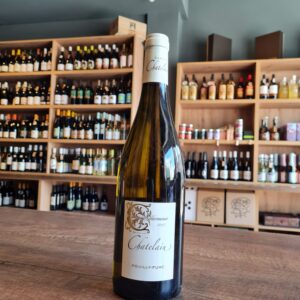 The Chatelain family has worked the vineyards of Pouilly-sur-Loire since the 1630s. Today the family farm is run by Jean-Claude and Geneviève Chatelain, the 11th generation of winemakers from Domaine Chatelain. The grapes for Les Chailloux are grown on the St. Andelain Hill with its clay and siliceous soils strewn with pebbles and flint; the wine is aged ‘sur lie’ prior to bottling in the spring. Light yellow-gold; the wine is vivid, aromatic and minerally on the nose, followed by a spicy flint (silex) character on the palate.
The Chatelain family has worked the vineyards of Pouilly-sur-Loire since the 1630s. Today the family farm is run by Jean-Claude and Geneviève Chatelain, the 11th generation of winemakers from Domaine Chatelain. The grapes for Les Chailloux are grown on the St. Andelain Hill with its clay and siliceous soils strewn with pebbles and flint; the wine is aged ‘sur lie’ prior to bottling in the spring. Light yellow-gold; the wine is vivid, aromatic and minerally on the nose, followed by a spicy flint (silex) character on the palate. -
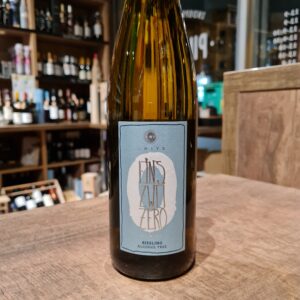 Johannes Leitz continues to innovate! In doing so, he recently partnered with a company to produce two alcohol-free rieslings. Germans have been producing non-alcoholic wines for over 70 years and that history has led to inventions to improve quality. Leitz’s hometown of Rüdesheim is the historic birthplace of the famous distillery Asbach Uralt. After the war, a fellow vigneron named Carl Jung began a distillery. Ultimately, Jung could not compete with the local brandy, but he developed a vacuum distillation system which enabled him to lower the temperature at which alcohol could boil off (because the boiling point decreases as atmospheric pressure decreases). Innovations in vacuum distillation have improved in recent years, and Leitz found a producer in Rheinhessen who recently patented a new, completely closed system that allows wine alcohol to boil at 28°C, preserving “wine-like” aromas and characteristics. As we all know, like fat, alcohol is a transporter of flavor, and without it, there needs to be something else to carry those flavors. 35 grams/L does the work for this riesling, though the sugar is nearly eaten up. Pairs well with gratinated crostini, cauliflower and goat’s cheese & butter, as well as with an Asian chicken casserole.
Johannes Leitz continues to innovate! In doing so, he recently partnered with a company to produce two alcohol-free rieslings. Germans have been producing non-alcoholic wines for over 70 years and that history has led to inventions to improve quality. Leitz’s hometown of Rüdesheim is the historic birthplace of the famous distillery Asbach Uralt. After the war, a fellow vigneron named Carl Jung began a distillery. Ultimately, Jung could not compete with the local brandy, but he developed a vacuum distillation system which enabled him to lower the temperature at which alcohol could boil off (because the boiling point decreases as atmospheric pressure decreases). Innovations in vacuum distillation have improved in recent years, and Leitz found a producer in Rheinhessen who recently patented a new, completely closed system that allows wine alcohol to boil at 28°C, preserving “wine-like” aromas and characteristics. As we all know, like fat, alcohol is a transporter of flavor, and without it, there needs to be something else to carry those flavors. 35 grams/L does the work for this riesling, though the sugar is nearly eaten up. Pairs well with gratinated crostini, cauliflower and goat’s cheese & butter, as well as with an Asian chicken casserole. -
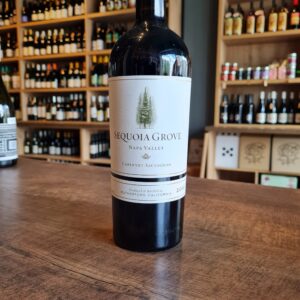 Family-owned winery Sequoia Grove was founded in 1979 in a 110-year old barn beneath a grove of Sequoia trees in Rutherford. Michael Trujillo joined the winery as assistant winemaker in 1981, becoming director of winemaking in 2002. His philosophy is based on balance in the vineyard, planting different blocks with different clones, and farming without pesticides. The family have been working with their partner growers for decades which gives them access to the very best quality fruit each year and allows them to create this complex wine which truly expresses the Rutherford terroir. The young wine is aged in oak barrel for 20 months which adds sweet spice notes and extra complexity to the finished bottling. The rich, powerful flavor profile makes this a winner with lovers of big, bold reds and a great match for red meats. Drink now through to 2030. Decanting is always recommended but is not a must
Family-owned winery Sequoia Grove was founded in 1979 in a 110-year old barn beneath a grove of Sequoia trees in Rutherford. Michael Trujillo joined the winery as assistant winemaker in 1981, becoming director of winemaking in 2002. His philosophy is based on balance in the vineyard, planting different blocks with different clones, and farming without pesticides. The family have been working with their partner growers for decades which gives them access to the very best quality fruit each year and allows them to create this complex wine which truly expresses the Rutherford terroir. The young wine is aged in oak barrel for 20 months which adds sweet spice notes and extra complexity to the finished bottling. The rich, powerful flavor profile makes this a winner with lovers of big, bold reds and a great match for red meats. Drink now through to 2030. Decanting is always recommended but is not a must


